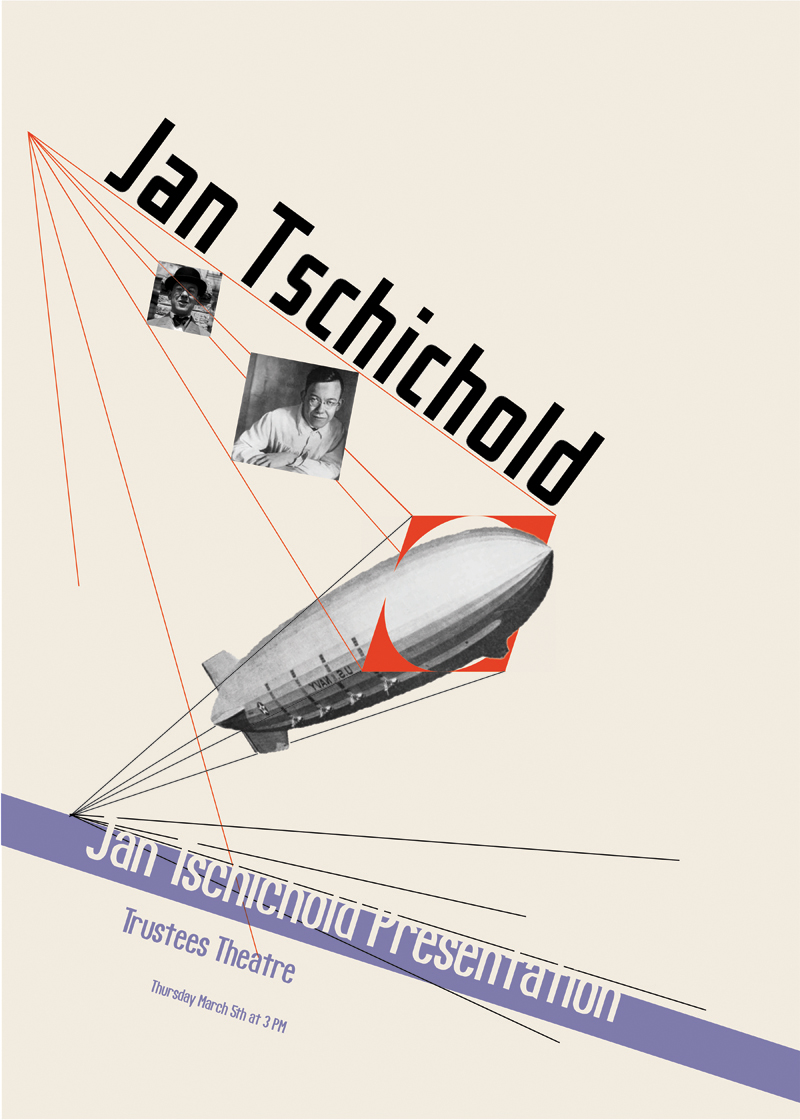Jan Tschichold was one of the most important typographic
and graphic designers of the 20th century. His lived throught the
most crucial years of early modernism and he contributed to the debate about
its application to graphic design.
He was one of the few designers to receive a full formal
education in calligraphy and typography, Tschichold studied from 1919 to 1923
at the Leipzig Academy for Graphic Arts and Book Trades under Walter Tiemann,
that had introduced him to the principles of classical typography. However,
with the visit to the 1923 Bauhaus exhibition in Weimar, he was impressed and
continued to grow familiarity with Soviet Constructivism, he began to apply
radical principles associated with these movements. These included asymmetric
composition, a reduction of form to its basic geometry, preference for
single-case, sans-serif typfaces and the use of photographs as illustrations.

Tschichold's most famous example of these principles in large
graphic form is the series of posters he made for the Munich cinema Phoebus
Palast, a job he took while teaching at the German Master Printers' School in
the city. Following the ideas of Constructivism, the posters does not only
strike visual summaries of each film but also comment on the character of
film-making, employing the Constructivist device of self-reflexiveness.
In 1925 Tschichold published his ideas on typographic
design in a special issue of the journal Typographische Mitteilungen. The
publication of Die Neue Typographie in 1928 established his
long-term significance for international design.
It summarized the ideas of modern typography in a short art-historical essay
and explaining the elements of typographic design, from
letterheads to the design of the entire book. The book had a significant impact
on the future of design, And in 1985 it was translated into English.

In 1933 they were errested by the nazis, Tschichold and
his wife Edith were forced to emigrate to Basle, Switzerland, where he taught
at the Arts and Crafts School and worked for the publisher Benno Schwabe. With
his stubbornness his design grew less. He regarded standardization and a house
style for typography as necessary in modern publishing.
Later in his life Tschichold served as typographic adviser
to the publishers Birkhauser in Basle and
Penguin Books in London, applying his inovative high standards to systematize
book design and corporate identity.



No comments:
Post a Comment